Meat is expensive, but you can save money without sacrificing quality. Here’s how:
- Choose affordable cuts: Opt for chuck roast, brisket, pork shoulder, chicken thighs, or round cuts. They’re flavorful, versatile, and cost less.
- Buy in bulk: Purchasing a quarter or half animal lowers the cost per pound and gives you more control over portions and cuts.
- Store meat properly: Use vacuum sealing, freeze at 0°F, and label packages with dates to prevent waste and keep meat fresh longer.
- Work with a butcher: Get expert advice on cuts, custom processing, and seasonal deals. Butchers can help you save money and get exactly what you need.
Start saving by making smarter meat-buying choices, planning ahead, and building a relationship with a trusted butcher like Wild Country Meats.
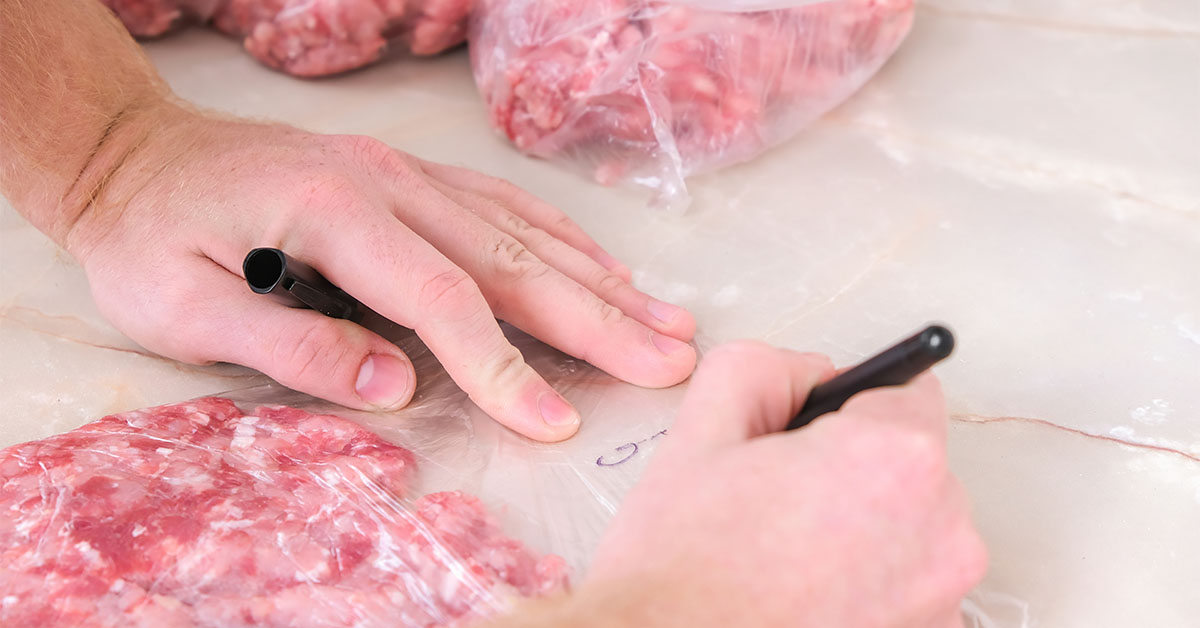
How to Choose Cost-Effective Meat Cuts
Making the most of your meat budget starts with picking cuts that suit your cooking methods while offering great value. While premium steaks might steal the spotlight at the butcher counter, the real savings lie in choosing cuts that balance flavor, versatility, and affordability.
Interestingly, price doesn’t always dictate flavor. Some of the most flavorful cuts are also the ones that benefit from slow cooking. These tougher cuts, often rich in connective tissue and fat, break down beautifully over time, resulting in tender, deeply flavorful dishes. Let’s dive into some specific cuts that deliver on both taste and cost.
Budget-Friendly Cuts That Deliver Flavor and Value
- Chuck roast: A perfect candidate for slow cooking, chuck roast becomes irresistibly tender in dishes like pot roast or stews. Its marbling ensures your meal stays moist and flavorful, and it can even be ground for versatile use.
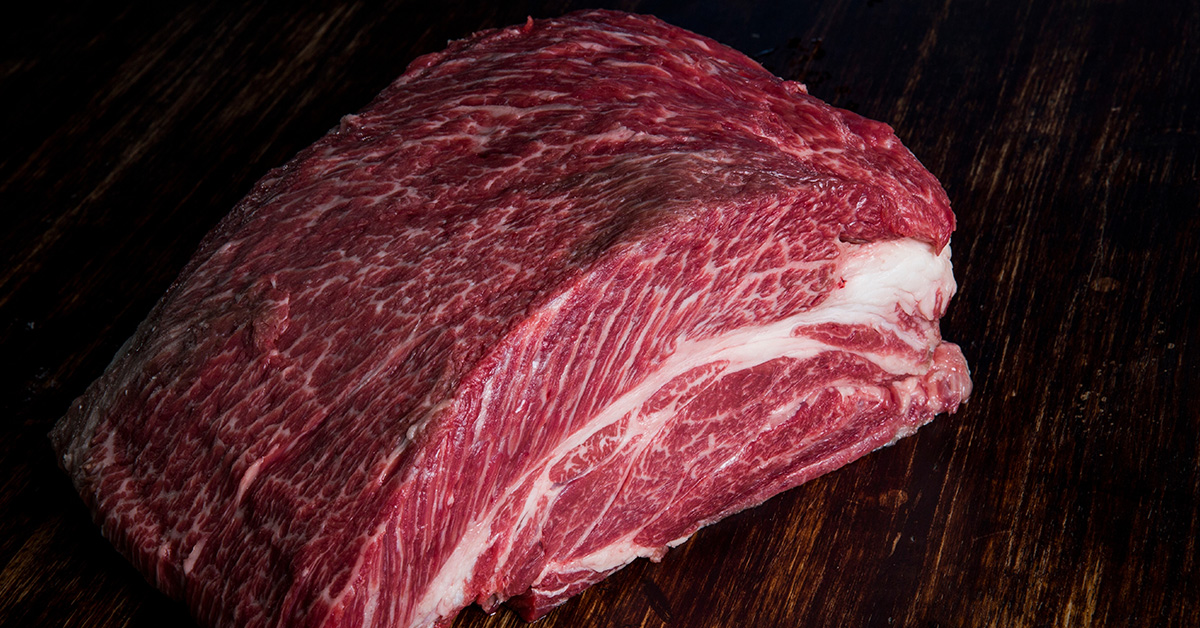
- Brisket: When bought whole, brisket provides plenty of meat for multiple meals. Plus, the fat rendered during cooking can be repurposed to enhance other dishes, adding a rich depth of flavor.

- Pork shoulder: Known for its higher fat content, pork shoulder is ideal for dishes like pulled pork, carnitas, or slow-roasted meals. The fat not only keeps the meat moist but also infuses it with incredible flavor, making it a family favorite.
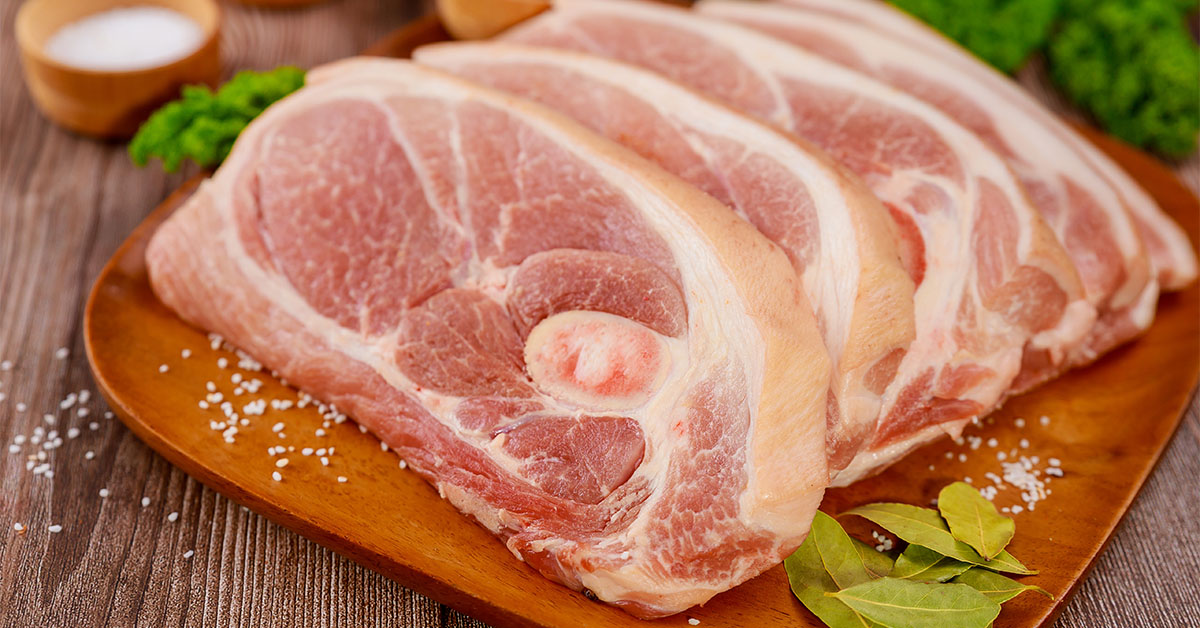
- Chicken thighs: These are a cost-effective alternative to chicken breasts and pack more flavor. Thanks to their dark meat, they remain juicy and tender even if slightly overcooked, offering flexibility for home cooks.
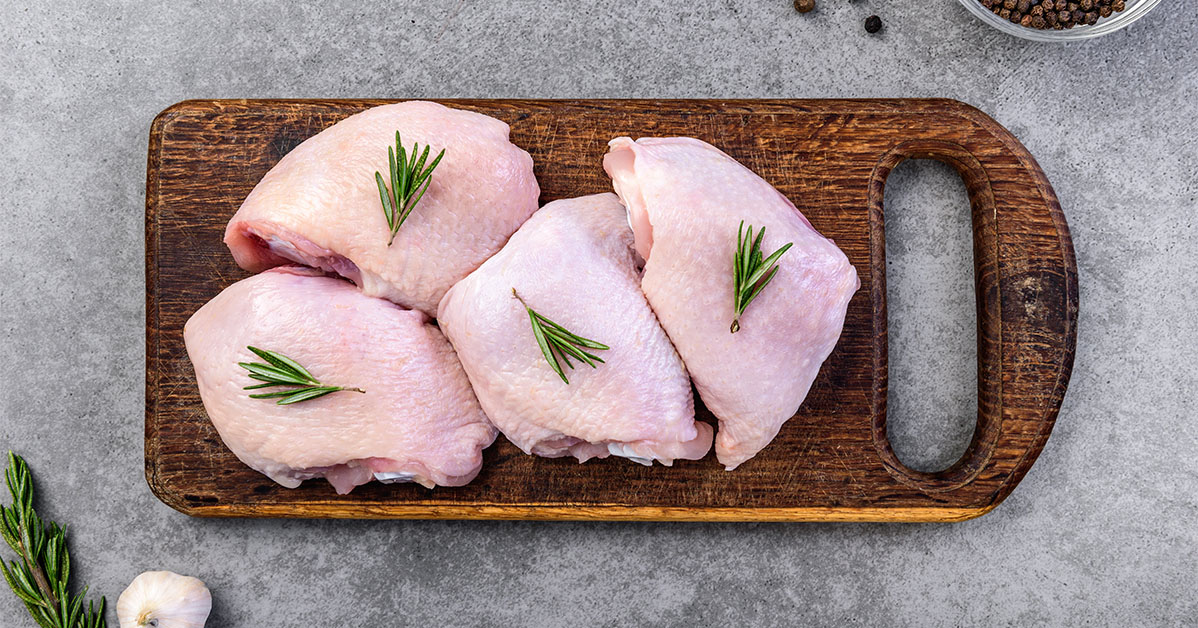
- Round cuts: Beef cuts like eye of round or bottom round provide lean protein at a wallet-friendly price. While they require careful preparation to avoid toughness, they shine in dishes like stir-fries, fajitas, or slow-cooked meals – especially when sliced thin against the grain.

How to Identify Quality in Lower-Priced Cuts
Once you’ve chosen your budget-friendly cuts, it’s important to assess their quality to ensure they taste great and last longer.
- Inspect marbling and texture: Look for thin, white marbling, which indicates good fat distribution, and fresh red or pale pink flesh. The meat should feel firm and springy to the touch. Avoid cuts with large chunks of hard fat, as these don’t render well, and steer clear of any gray or brown discoloration, which could signal the meat is past its prime. The surface should feel moist but never slimy.
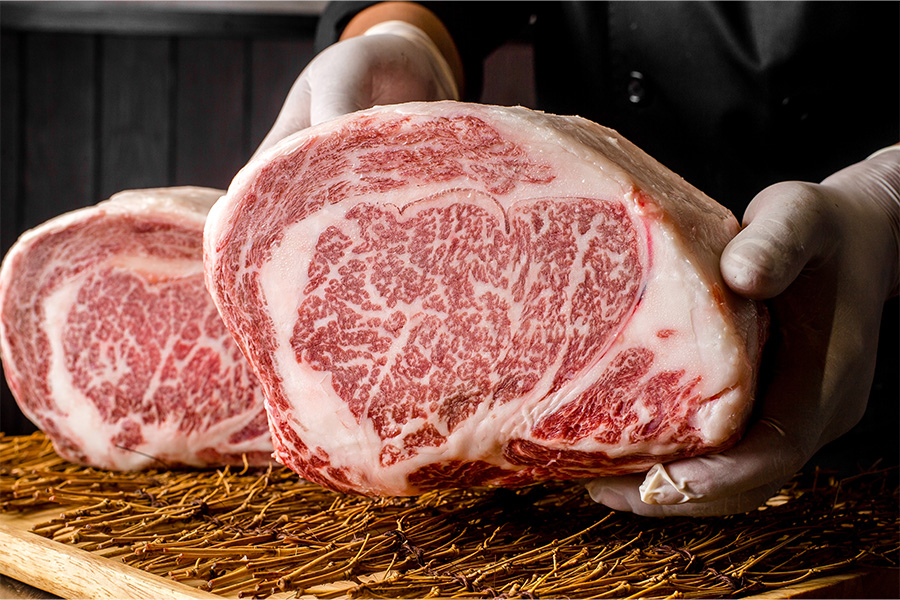
- Ask about aging: For beef cuts, inquire about the aging process. Properly aged meat – whether dry-aged or wet-aged – develops enhanced flavor and tenderness, even in more affordable cuts. Butchers are often happy to share details and recommend the best options for your cooking plans.
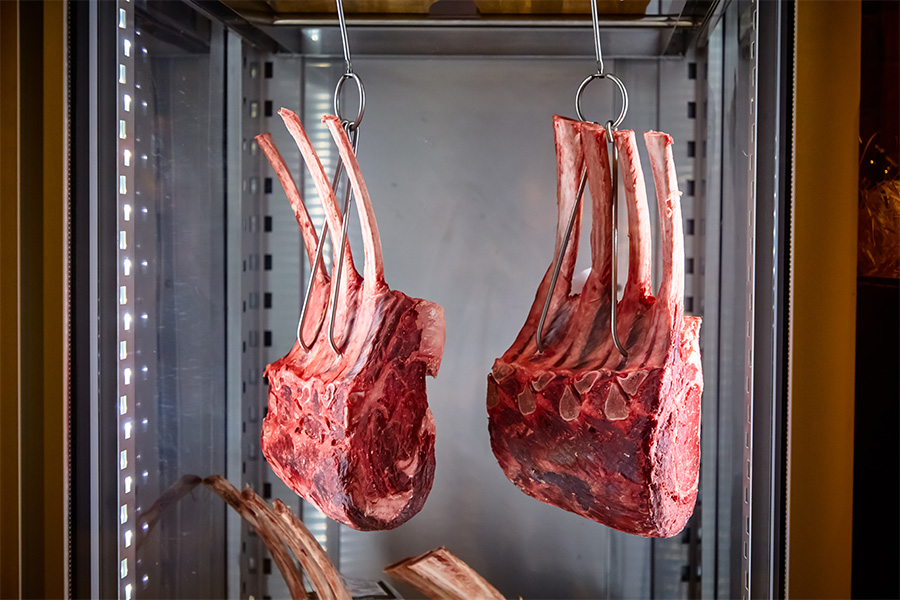
- Check the packaging date: Fresher meat lasts longer, giving you more flexibility for meal prep or freezing. Always look for recently packaged cuts to maximize freshness.
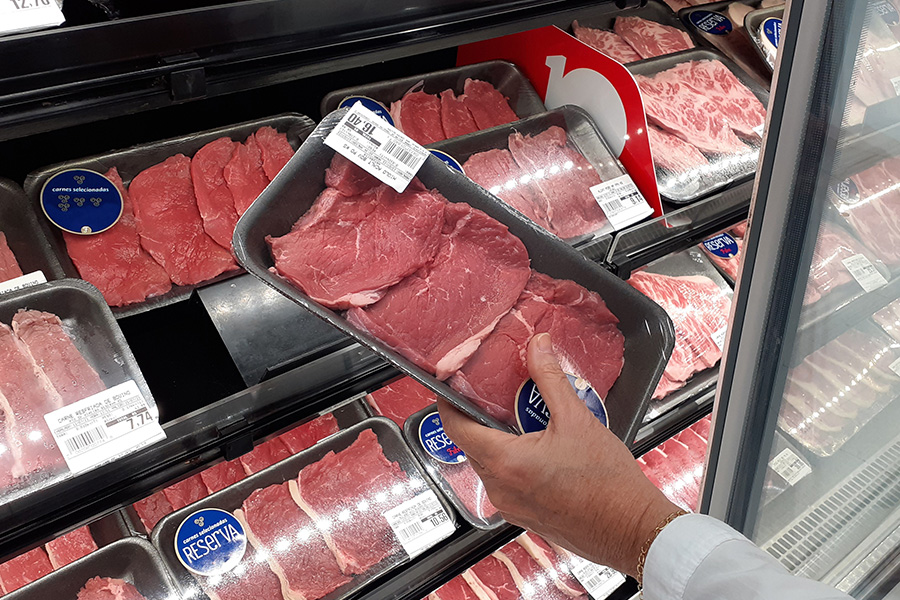
How to Save Money Through Bulk Purchases
Buying meat in bulk can be a smart way to cut costs while ensuring you have a steady supply of quality protein. The concept is simple: purchasing larger quantities often unlocks wholesale pricing, reducing the overall cost per pound. But to make the most of bulk buying, you need to understand both the financial perks and the practical steps involved.
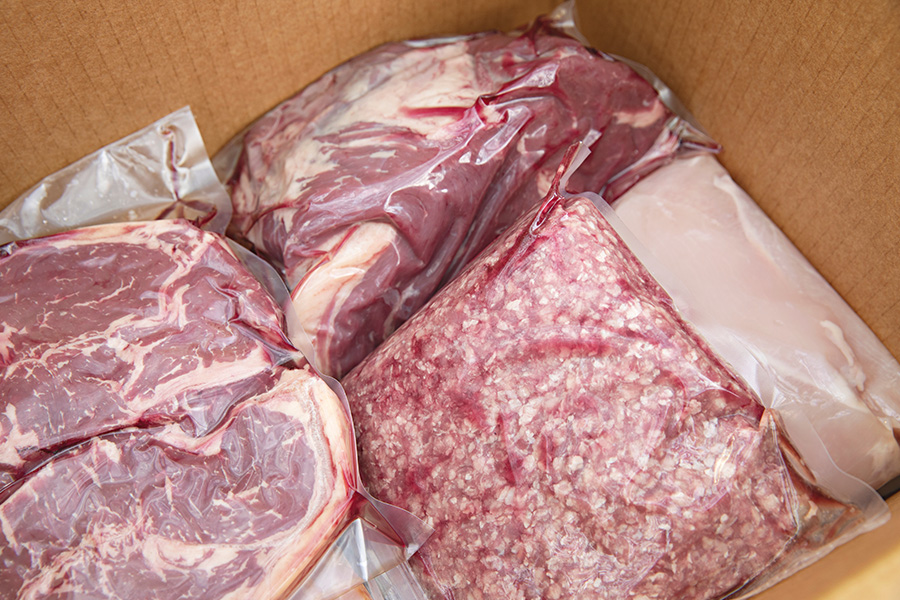
When you buy a quarter, half, or even a whole beef package, you’re doing more than just stocking up – you’re planning ahead for your household’s protein needs. These bulk purchases offer cost advantages and allow you to maximize the value of every cut of meat. Plus, this approach aligns with Wild Country Meats’ philosophy of getting the most out of every purchase.
Next, let’s dive into how custom processing and smart storage strategies can stretch your dollar even further.
Benefits of Bulk Orders and Custom Processing
Custom processing is where bulk buying truly shines. By working with a butcher, you can ensure that every part of the animal is put to good use. Instead of discarding certain parts, they can be turned into valuable products, making your purchase go further.
Take offal, for example. These internal organs can be processed into variety meats for your meals or even high-quality pet food. Bones, which might otherwise be wasted, can be used to make flavorful marrow bones for cooking or ground into pet food. Even hides can be managed in ways that help offset processing costs.
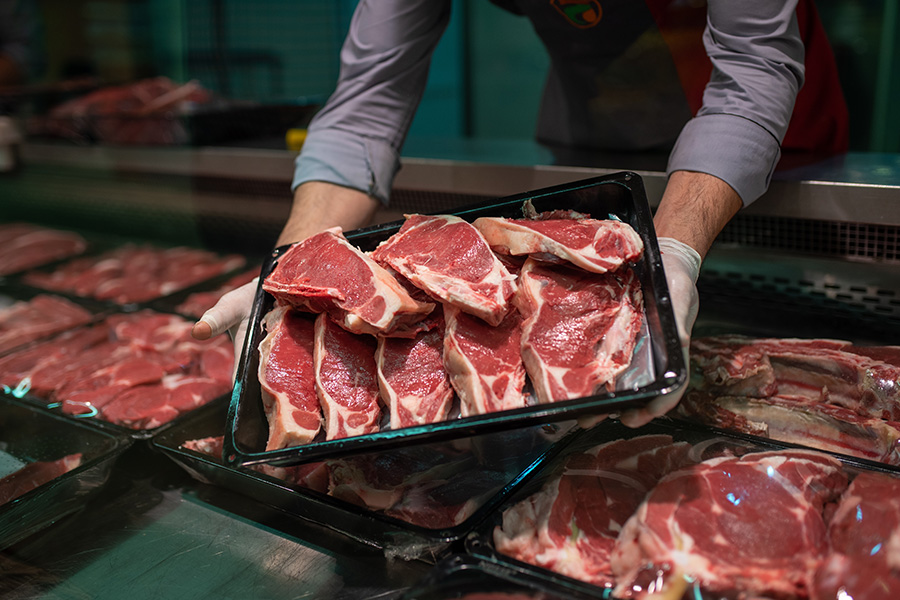
Another perk of custom processing is the ability to create value-added products. This includes curing, marinating, smoking, or cooking your meat to enhance flavor and shelf life. Imagine turning your bulk purchase into custom sausages, bacon, or deli meats – items that would cost much more if bought individually at the store.
Customization also means tailoring your meat to fit your family’s eating habits. You can request specific cuts, choose seasoning blends, or portion the meat to suit your typical meal sizes. This level of personalization not only reduces waste but also ensures you get exactly what you need.
How to Plan Storage for Bulk Orders
Before your bulk order arrives, take some time to prep your freezer. Clean it out, toss anything that’s expired or freezer-burned, and make room for your new supply. This step prevents contamination and ensures your freezer is ready to handle the load.
Keep your freezer at 0°F (-18°C) or lower to maintain quality and stop bacterial growth. A dedicated freezer thermometer is a worthwhile investment since built-in gauges can sometimes be inaccurate.
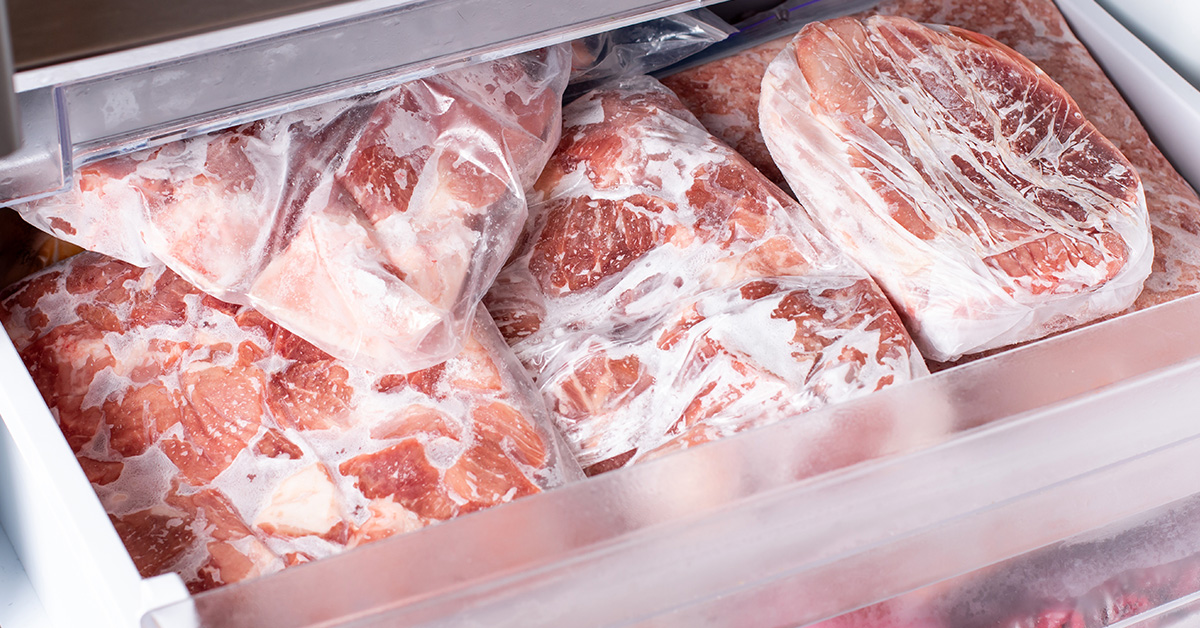
To make daily use more convenient, portion your meat into meal-sized packages before freezing. For example, divide ground beef into 1-pound bags or separate chicken breasts into pairs. This way, you only thaw what you need, reducing waste and maintaining food safety.
Proper wrapping is crucial to prevent freezer burn. Double-wrap your meat in plastic or freezer paper, then place it in heavy-duty freezer bags or aluminum foil. For even better protection, consider using a vacuum sealer. This method removes nearly all air, locking in flavor and extending shelf life – vacuum-sealed meats can stay fresh for up to two or three years. It also saves space, letting you store more meat in the same freezer.
For added efficiency, flatten packages of ground meat or thin steaks before freezing. This allows them to freeze faster, stack neatly, and thaw quicker when it’s time to cook.
Finally, organize your freezer using a first-in, first-out (FIFO) system. Place newer packages at the back or bottom and move older ones to the front. Label each package clearly with the type of meat, portion size, and freezing date using a permanent marker. You can even color-code different types of meat for quick identification. This ensures you use older items first, keeping your meat fresh and minimizing waste.
How to Work with Your Local Butcher
Getting to know your local butcher can be a game-changer for your meals and your budget. Unlike grabbing prepackaged meat from the store, working directly with a butcher gives you access to personalized service, expert advice, and often better prices on high-quality cuts.
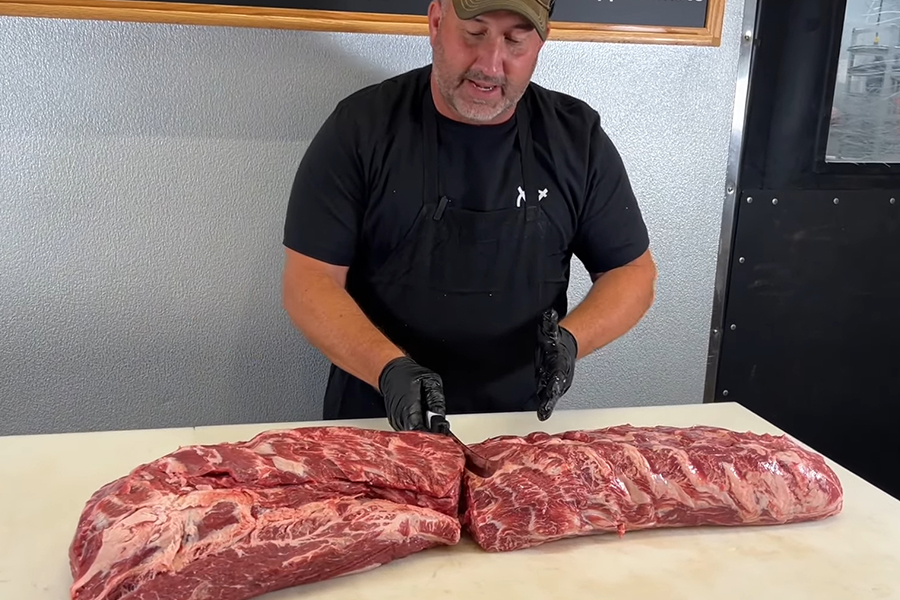
Your butcher brings years of knowledge about the meat industry to the table. They can help you find the best-value cuts, clue you in on seasonal specials, and guide you toward options that fit your budget and cooking plans. This relationship makes it easier to get advice on preparation and even request custom processing to suit your needs.
How to Get Expert Advice on Cuts and Preparation
Instead of just asking for the cheapest cut, share details with your butcher – what you’re cooking, how many people you’re feeding, and your budget. This helps them steer you toward cuts that work perfectly for your needs.
For example, ask about less common cuts that pack a lot of flavor. While many people stick to popular choices like ribeye or tenderloin, your butcher might suggest alternatives like chuck roast, pork shoulder, or lamb shanks – options that are often more affordable but just as delicious.
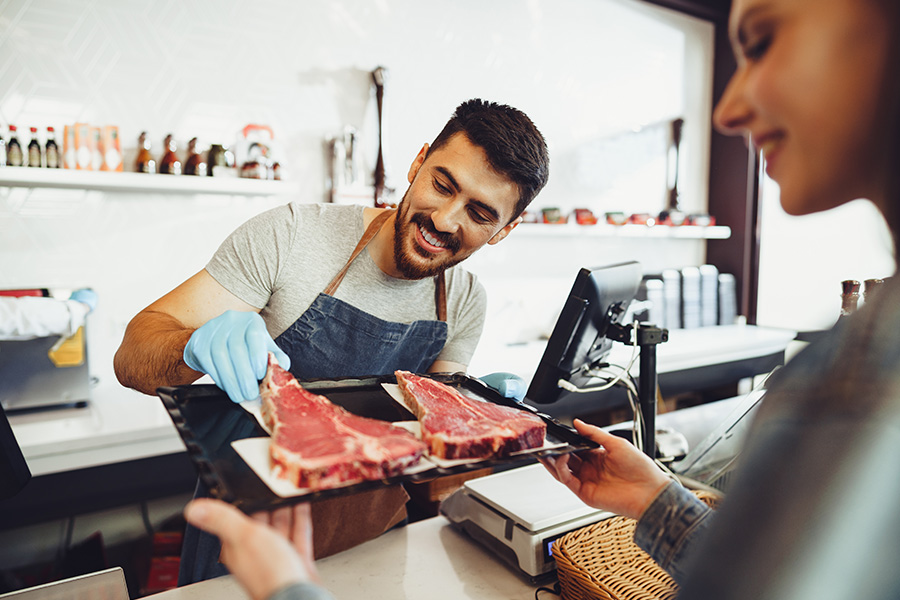
Timing your visits can also help you snag deals. Ask when the shop typically marks down items or receives new shipments. Many stores offer discounts on cuts that need to be sold quickly.
Don’t hesitate to ask for cooking tips either. Butchers can recommend the best cooking methods for each cut, suggest marinades to tenderize tougher pieces, or even show you how to trim meat properly.
Another cost-saving tip? Inquire about buying whole animals or primal cuts. Purchasing a whole pork shoulder or beef brisket and having it portioned into smaller cuts can often save you money compared to buying individual pieces.
Having a trusted butcher means you’re not just buying meat – you’re getting personalized advice and service. Wild Country Meats is an excellent example of a butcher shop that goes above and beyond for its customers.
Why Choose Wild Country Meats
When choosing a butcher, you want expertise, transparency, and a commitment to customer care. Wild Country Meats, a family-run business in Oklahoma since 1998, checks all those boxes. Led by third-generation butcher Chris Gabriel, they’ve built a reputation for quality and trust.
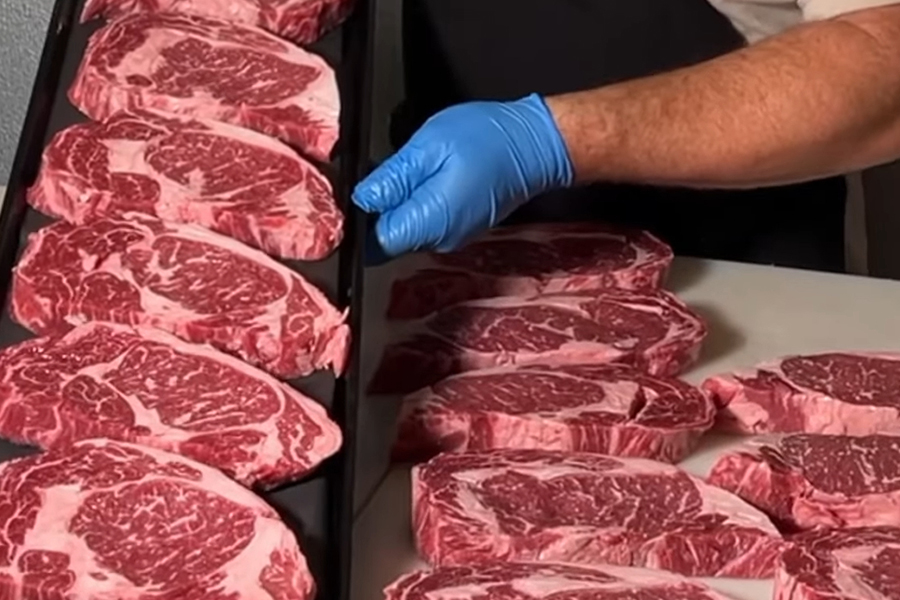
One thing that sets Wild Country Meats apart is their transparent processing system. Every animal they handle is tagged, photographed, and inventoried, so you can be confident that you’re getting exactly what you brought in.
Their USDA-inspected facilities allow them to offer tailored cuts, whether you want your ground beef in 1-pound packages or steaks cut to a specific thickness. With two fully licensed locations in Hominy and Cleveland, they’re equipped to handle everything from small custom orders to larger bulk purchases. They process a wide range of meats, including beef, pork, lamb, goat, buffalo, and wild game, all to your exact specifications.

Convenience is another perk. They offer delivery within a 50-mile radius, serving areas like Tulsa, Broken Arrow, and Stillwater. This saves you time and gas while ensuring your meat gets to you fresh. If you prefer to pick up your order, both locations also feature drive-thru service for quick and easy access.
Wild Country Meats also carries a variety of specialty products, from teriyaki jerky to jalapeño snack sticks and honey sriracha items. These specialty options often come at a better price than similar products found in retail stores.
As a certified "Made in Oklahoma" retailer, Wild Country Meats supports local agriculture, which means you’re getting fresher products that haven’t traveled long distances. Plus, keeping your food dollars local often leads to better pricing on high-quality, locally raised livestock.
sbb-itb-5ae85c5
How to Store and Preserve Meat for Extended Freshness
Storing meat properly is essential if you want to make the most of your grocery budget. By using the right methods, you can extend the shelf life of your meat, reduce waste, and ensure it stays fresh and safe to eat. The trick lies in understanding how different storage options impact meat quality and longevity.
Fresh meat typically lasts about 1–2 days in the fridge for ground cuts and 3–5 days for whole cuts. Freezing meat significantly increases its shelf life, often by several months. Vacuum-sealing, in particular, is a game-changer, as it can double or even triple storage times compared to traditional wrapping.
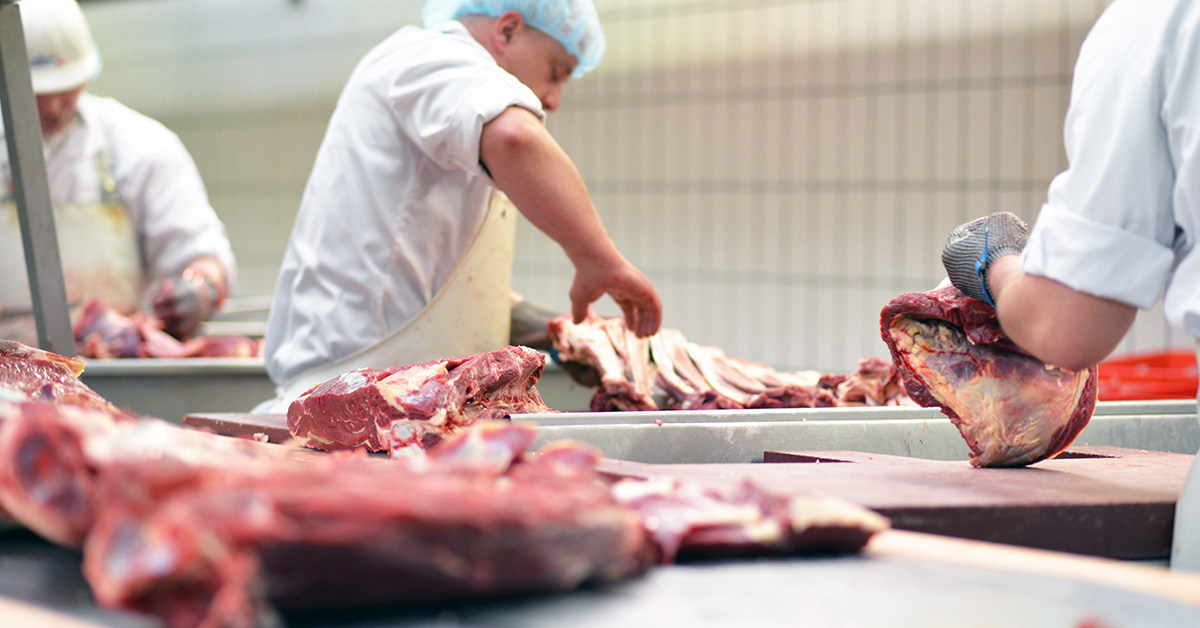
Temperature control is critical. Your refrigerator should consistently stay at 40°F or below, while your freezer needs to maintain a steady 0°F or lower. Even minor temperature changes can affect the safety and quality of your meat. To avoid cross-contamination, store meat on the bottom shelf of your fridge, where any drips won’t come into contact with other foods.
Best Practices for Freezing and Vacuum-Sealing
Freezing and vacuum-sealing are excellent ways to preserve meat quality, especially if you buy in bulk. Vacuum-sealing removes air, which helps prevent freezer burn and slows bacterial growth. This method keeps beef fresh for up to 2–3 years in the freezer, while traditionally wrapped beef lasts only 6–12 months. Similarly, pork and lamb stay good for 1–2 years, and poultry for up to 1 year when vacuum-sealed.

When vacuum-sealing, portion your meat into meal-sized packages – about 1–1.5 pounds for a family of four. This way, you only thaw what you need, minimizing waste. For cuts with sharp edges, wrap them in freezer paper before sealing to prevent punctures. Double-wrapping helps keep the seal intact during storage.
If you don’t have a vacuum sealer, try the water displacement method. Place the meat in a heavy-duty freezer bag, seal it most of the way, and slowly submerge it in a bowl of water. The water pressure pushes out the air, creating a near-vacuum seal. Once the air is out, finish sealing the bag.
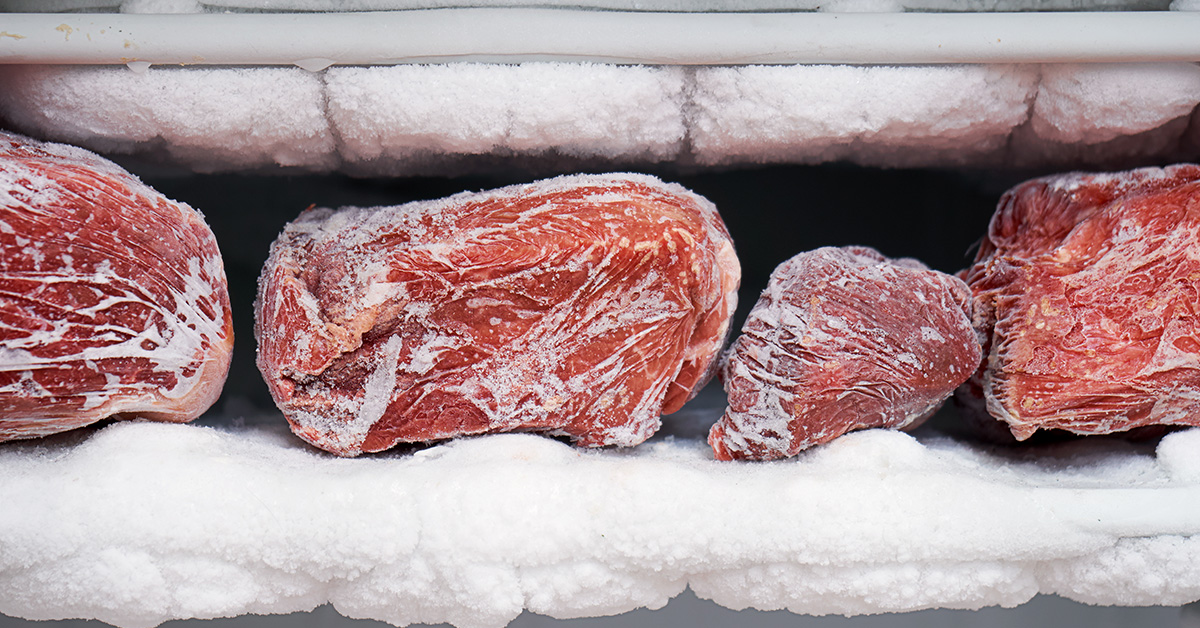
For smaller cuts, flash-freezing is a handy trick. Lay the meat on a parchment-lined baking sheet and freeze for 2–3 hours before transferring it to vacuum-sealed bags. This prevents pieces from sticking together and makes thawing easier.
Ground meat needs extra care because its larger surface area is more exposed to air. Flatten it to about 1-inch thickness in freezer bags before sealing. This helps it freeze and thaw more evenly while also saving space in your freezer.
How to Label and Rotate Meat in Storage
Once your meat is sealed, labeling and organizing it properly ensures you use it while it’s still at its best. A clear labeling system prevents those “mystery meat” moments and helps you keep track of what’s in your freezer. Be sure to include the cut type, weight, and freeze date on each package. Use a permanent marker or freezer-safe labels that won’t peel off in cold temperatures.

To make things even easier, create a simple coding system for different types of meat. For example:
- B for beef
- P for pork
- L for lamb
- C for chicken
So, a label like "B-Ribeye-2lbs-09/16/25" tells you everything you need to know at a glance.
Keep a freezer inventory list on your freezer door or in a digital app. Update it every time you add or remove items. This helps with meal planning and prevents you from buying meat you already have.
Use the oldest meat first to maintain quality. Even frozen meat loses flavor and texture over time. For instance, vacuum-sealed beef that’s been frozen for 18 months is still safe to eat but might work better in slow-cooked dishes like stews or pot roasts rather than as a grilled steak.
For better organization, consider using color-coded bins or baskets in your freezer. Dedicate one bin for beef, another for pork, and a third for poultry. This setup makes it easier to find specific cuts and reduces the amount of time your freezer door stays open.
In the fridge, opt for clear containers instead of opaque bags. Seeing the meat directly helps you monitor its freshness and ensures you use it before it spoils.
Finally, check your inventory regularly – about once a month – and plan meals around items nearing their storage limits. Set phone reminders for shorter-term items like fresh sausages or ground meat, which should be used within 3–4 months of freezing, even when sealed properly. Prioritizing these items in your meal planning ensures nothing goes to waste.
Conclusion: Smart Strategies for Meat Buying
Getting the most out of your meat purchases comes down to making informed, practical choices. Affordable cuts like chuck roast, pork shoulder, and chicken thighs pack plenty of flavor without straining your wallet. Combining these choices with a thoughtful approach ensures you save money while still enjoying high-quality meals.
Buying in bulk is another great way to stretch your budget. Not only can you save money, but bulk purchases also allow you to customize cuts to fit your preferences. Just make sure you have enough freezer space and a solid plan to store everything properly to maintain freshness over time.
Working with a knowledgeable butcher can take your meat-buying game to the next level. They can guide you toward cuts that match your cooking style, suggest budget-friendly alternatives to pricier options, and share tips to enhance flavor and tenderness. This personalized advice turns what might feel like guesswork into a well-thought-out strategy.
Proper storage is equally important. Using vacuum-sealing and maintaining the right temperature can significantly extend the shelf life of your meat. Simple habits like labeling and rotating your inventory help ensure you’re always using meat at its best.
A trusted supplier, like Wild Country Meats, ties all these strategies together. With expert butchers, custom processing, and USDA-inspected facilities, they offer high-quality meat you can count on, delivered right to your door.
FAQs
What are the advantages of buying meat directly from a butcher instead of choosing prepackaged options at the store?
Buying meat from a butcher comes with some great perks. For starters, the meat is usually fresher and better in quality. That’s because butchers often source their products locally, skipping the long shelf life that comes with prepackaged options. The result? Tastier meals and higher-quality cuts.
Another big benefit is the personalized service you’ll receive. Want a specific cut or portion size? Need tips on cooking your selection? A butcher can help with all of that. Plus, you might save some cash by buying in bulk or getting advice on budget-friendly cuts. And let’s not forget – shopping at a local butcher supports your community and encourages more ethical sourcing practices. It’s a win-win!
What’s the best way to store bulk meat to keep it fresh and safe?
To ensure bulk meat stays fresh and safe, keep it refrigerated at or below 40°F, ideally in the coldest part of the fridge. If you need to store it for a longer period, freezing is your best option. Divide the meat into smaller portions, wrap each tightly with plastic wrap or freezer paper, and use airtight containers or vacuum-sealed bags. This helps prevent freezer burn and keeps moisture locked in.
Don’t forget to label each package with the date so you can easily track its freshness. Keep your freezer set at 0°F or below to maintain the meat’s quality and safety. Proper packaging, portioning, and temperature control make all the difference.
Why are some affordable cuts of meat packed with flavor?
Affordable cuts of meat are often packed with flavor because they come from muscles that get a lot of use. These well-worked areas tend to have more intramuscular fat (marbling) and connective tissue, which break down beautifully when cooked low and slow. Cooking methods like braising or roasting transform these elements into rich, savory goodness.
Take cuts like chuck, shoulder, and brisket, for instance. They’re not only easy on the wallet but also deliver a bold, beefy taste, thanks to their natural makeup and the activity level of the animal. With the right approach in the kitchen, these cuts can be every bit as satisfying – and sometimes even more flavorful – than their expensive counterparts.

